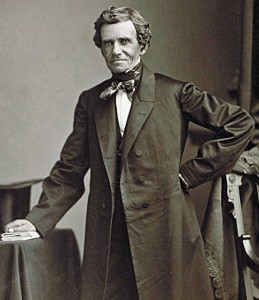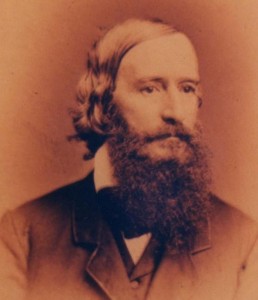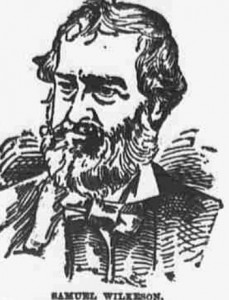As readers of Blog Divided are well aware, we have been fascinated by the story of Samuel and Bayard Wilkeson, a father and son who were both at Gettysburg, one as a correspondent for the New York Times and the other as a 2LT for the Union army. The son died on the battle’s first day after being wounded by an artillery shell and after amputating his own leg. The father discovered his son’s body on July 4, 1863 following more than a day of intense searching. Then he wrote a passionate, angry account of what happened for the New York Times, which closed by resolving that the dead at Gettysburg had “baptised” with their blood, the “second birth of Freedom in America.” President Lincoln knew the Wilkesons. The story of the family’s tragedy echoed across the North during the summer of 1863. So the connection to Lincoln’s famous phase in the Gettysburg Address, “a new birth of freedom,” seemed overwhelming, intentional, and eminently teachable. We first posted about the story of the “Angry Father” in July 2010, but then followed up with more details in the summer of 2013, here and here. I spoke about the Wilkeson family during the 150th anniversary commemorations for the Battle of Gettysburg and have been featuring the story in numerous K-12 workshops during the last five years, typically through this handout.
Matthew Pinsker from Gettysburg Foundation on Vimeo.
But there’s been one nagging concern that we just have not yet been able to fully resolve. What exactly did Sam Wilkeson look like? The problem is that there are multiple images attributed to him but they don’t seem to align properly. I brought this up at the final seminar session of the “Understanding Lincoln” open, online course and asked for help, in true “class-sourcing” fashion. Remarkably, within a few hours, I got a very helpful lead from course participant Martha Bohnenberger, a social studies teacher from South Carolina.
Here is the problem that first disturbed me in the summer of 2013. The House Divided Project has been using this striking 1859 image of Sam Wilkeson (on the top left) taken by Alexander Gardner, discovered and cleaned up by project co-founder John Osborne, courtesy of the online collections of the Smithsonian American Art Museum. Yet the Buffalo News profiled the Wilkesons this past summer because the family were Buffalo natives and they used the image on the top right –clearly not the same person– to represent Sam Wilkeson (undated, no source citation). I presume they obtained this photograph from the Buffalo History Museum, but I haven’t yet tracked it all down. By the way, Buffalo was a nineteenth-century city partly founded by the grandfather in this story, Judge Samuel Wilkeson, Sr., who had hailed from Carlisle, Pennsylvania, where Dickinson College is located. However, there is even more about the image to consider. The Gettysburg National Military Park features the story of the Wilkesons inside their main museum experience at the Visitor’s Center, but they use an entirely different image reportedly of newspaper correspondent Sam Wilkeson, which they credit to the National Archives (on the bottom left). Meanwhile, Martha Bohnenberger discovered this illustration (bottom right) in the New York Sun from December 3, 1889 as part of an obituary for Wilkeson –read it, he led a truly remarkable life– by doing some shrewd online research at the Library of Congress site, Chronicling America. Again, it’s different.
Now, I am not willing to bet my tenure on this, but I think that the Smithsonian Wilkeson (1859) is the same as the New York Sun Wilkeson (1889), just bearded in that latter illustration. The lines of the face, however, strike me as almost identical. But I don’t quite know what to make of the National Archives Wilkeson or the Buffalo News Wilkeson. The image quality isn’t quite good enough for me to decide, but they seem (especially the Buffalo Wilkeson) to be a different person (and probably different from each other as well). What do you think? There’s certainly more researching and phone calling to do, which I haven’t yet accomplished, but I appreciated the quick extra help from my class-sourcing exercise the other day and would like to continue to seek help if others would provide it. Feel free to comment here and leave your opinion, or contact me directly by email (pinskerm@dickinson.edu) to share any insights.












Related Articles
No user responded in this post
Leave A Reply
Please Note: Comment moderation maybe active so there is no need to resubmit your comments